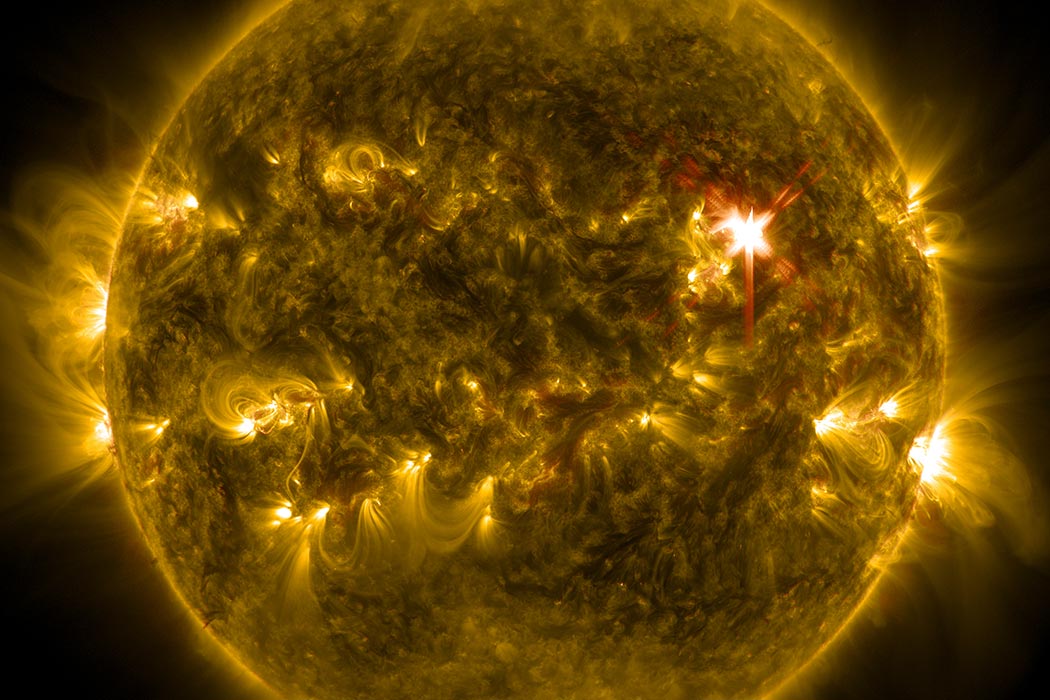In October, the Obama administration released a plan for dealing with solar flares. These solar events are difficult to anticipate, but the administration hopes it can minimize their impact on our electrical infrastructure. This effort is not purely academic: we’ve experienced harrowing solar events in the past.
In 1859, a period of sunspots culminated in a storm on planet earth known as The Carrington Event. The Carrington event produced aurora displays as far south as the Caribbean, but it was more than just a cosmic spectacle. Though the event was initiated by a series of solar flares, it escalated to what experts call a coronal mass ejection (CME), which is a series of gas and magnetic field explosions on the Sun’s surface that originate from the solar corona. When the CME collides with the Earth’s atmosphere, the planet’s protective magnetic field is the first point of impact.
The collision causes the strength of the magnetic field to fluctuate and produces a surge of current in metallic objects. Currents are minor in small metallic objects but power lines are especially vulnerable. Flare-induced currents can also affect pipelines, leading to corrosion and leaks. Many electrical components today, even in fiber optic networks, contain long coiled wires that are vulnerable to the surge from a CME.
The 1859 event caused catastrophic fires in numerous telegraph stations as their relays overloaded and melted. At the time, electrical and communications grids were simple, and much cheaper and easier to repair; localized power grids, due to their small size, limited the scope of the damage. The story today is very different. A strike now would result in trillions of dollars worth of damage and knock out power for millions of customers. Moreover, very few companies are capable of manufacturing at an effective rate the large transformers most vulnerable to a CME.
The 1859 solar event was not an aberration. A huge CME in 2003, knocked out power in Sweden and forced air traffickers to reroute airlines to avoid exposing passengers and crew to excessive radiation. Alarmingly, recent sunspot patterns are uncomfortably similar to those in the years preceding the 1859 event, ratcheting up concerns among emergency planners. Though the techniques needed to predict a flare are still in its infancy, the Obama administration’s efforts show that the government has been giving the potential threat a serious look and hoping to strategically get ahead of the problem.







